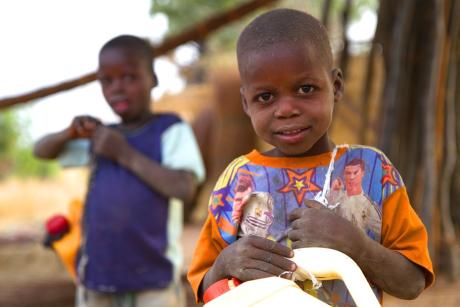
Micaela and Lidia (our colleagues) posing in their traditional outfits.
Published June 29, 2015, last updated on April 7, 2020 under Voices of DGHI
Guipil. Corte. Faja. Personal style.
These are the essentials needed to properly don traditional Mayan clothing.* The standard outfit consists of a blouse [guipil] worn with a wrap-around skirt [corte] and held slightly above the waist by a belt [faja]. While visiting communities, numerous Katchikel [Mayan tribe] women greet us while also proudly displaying a lush pastel of colors, textures and patterns on these three items. In addition to creative designs, the stitching on the neckline of the guipils is unique to the community; each town has an identifiable pattern.
In an age of fleeting trends, the fashion style of these indigenous women serves as an extension of their rich history and culture. The preservation of unique cultural traits proves to be increasingly difficult and the people who are conscious of this hard task have to constantly judge as to whether new ideas add or subtract from their beliefs.
In terms of our work, we similarly have to find a balance between presenting sanitation habits we grew up learning and also respecting the ideals and traditions that have guided these people for centuries. For example, during one of our water practice interviews, a woman told me that she learned from the training that she received that the tap water is generally contaminated. Although she reassured us that she took healthy measures like boiling and filtering her drinking water, she expressed some doubts, stating that she did not fully understand why the water is not safe, because her ancestors had been drinking it for numerous years. This interaction really stuck with me because it was an important reminder that we have to be conscious of the preconceived notions that we bring— even if they are not negative— when interacting with the people in these communities.
Miuccia Prada once said, "Fashion is an instant language." I believe that fashion is a universal language with numerous dialects. In order to fully grasp this language, we must be willing to appreciate both the slight and vast variances by attempting to learn them. In a similar manner, we have learned that just as each community has its own pattern, the traditions and experiences have been etched differently in the five communities we work with: Santa Cruz, Jaibailito, Chaquichoy, Chuitzanchaj and Pajomel.
Whether it is worn for convenience or as a political statement, the traditional clothing of these Mayan women serve as a consortium of hieroglyphics telling a story, a symbol of identity, and a working form of dialogue. Next time I put on my Ikwerre [my tribe in Nigeria] attire, I will appreciate the fact that I am speaking, and preserving, my dialect just as these women do.
*Personal style is not mandatory but highly recommended; it is also not included with purchases.


